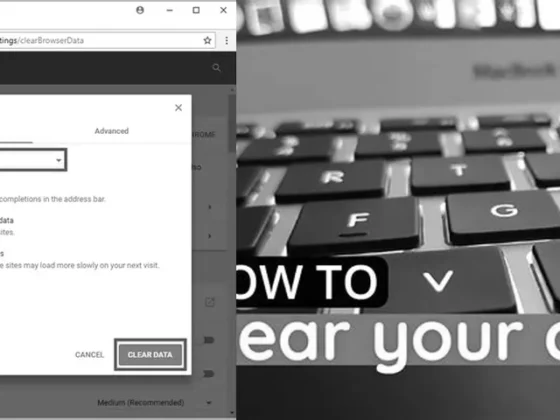How to Manually Update Your Old Chromebook: A Comprehensive Guide: Are you still using an old Chromebook that desperately needs an update? Don’t worry, we’ve got you covered! In this step-by-step guide, we’ll show you how to manually update your outdated Chromebook and keep it running smoothly. Whether your device is struggling to update or you’re simply looking for alternative solutions, we’ve got all the answers. So, sit back, relax, and let’s dive into the world of updating your old Chromebook!
notification to update your chromebook. When that happens, simply click “Update” to install the new version.
Updating an Old Chromebook: A Step-by-Step Guide
Initiating the Update Process
When it comes to updating your Chromebook, the process is designed to be straightforward. However, for those who are not familiar with the steps, here’s how you can manually check for and initiate an update:
- Ensure that your Chromebook is turned on.
- Connect to a stable Wi-Fi network to allow for the update to download.
- Click the time displayed at the bottom right of your screen.
- Locate and select “About Chrome OS” at the bottom left.
- Under “Google Chrome OS,” you will find the current version your Chromebook is running.
- Click on “Check for updates” to see if any updates are available.
If there is an update available, it will begin to download automatically. Once the download is complete, you’ll be prompted to restart your Chromebook to complete the installation of the update.
Understanding Update Limitations on Older Chromebooks
Older Chromebooks have older hardware components, which may not support the latest software updates. This is particularly common if your Chromebook is over 5 years old. In such cases, you might encounter a notification indicating that your device will no longer receive software updates. This is a built-in limitation to ensure that the performance of your device does not suffer from software requirements that exceed your hardware’s capabilities.
What to Do When Your Chromebook Won’t Update
Checking Update Eligibility
Before attempting to troubleshoot, it’s important to verify whether your Chromebook is still eligible for updates. Chromebooks have an Auto Update Expiration (AUE) date, after which they stop receiving updates. You can check this date on Google’s support website by looking up your model.
Troubleshooting Update Issues
If your Chromebook is still within its update window but is having trouble updating, try the following steps:
- Restart your Chromebook and attempt to update again.
- Check your internet connection to ensure that it is stable and fast enough to download updates.
- Consider resetting your Chromebook to factory settings if persistent issues occur, but ensure to back up your data first.
Alternative Solutions for Outdated Chromebooks
CloudReady: An Option for End-of-Life Devices
If you find that your Chromebook has reached the end of its update life, one potential solution is to install CloudReady. CloudReady is an operating system based on Chromium OS that can breathe new life into older hardware. While not an official Google product, it provides a similar experience to Chrome OS and is maintained by Neverware.
Using Linux on Chromebooks
Another option for extending the usefulness of an older Chromebook is to install a lightweight Linux distribution. Many distributions are designed to work well on older hardware and can provide a full desktop experience for basic tasks such as web browsing, document editing, and media playback.
Protecting Your Chromebook After Support Ends
Understanding Security Risks
Once your Chromebook stops receiving updates, it becomes more vulnerable to security risks. Without the latest security patches, you are at a higher risk of malware and other cyber threats. Therefore, it’s crucial to be proactive in protecting your device.
Best Practices for Security
To minimize risks, adhere to the following best practices:
- Avoid downloading files from unknown sources.
- Use a reliable antivirus extension or app.
- Keep your browser and any installed apps up to date.
- Regularly back up your data.
Conclusion: Keeping Your Chromebook Current
While keeping an old Chromebook up to date may seem challenging, following the steps outlined in this guide can help ensure that your device stays as current as possible. For devices that no longer receive updates, alternatives such as CloudReady or Linux can provide an extended lifespan. Regardless of the path you choose, staying informed and proactive about your Chromebook’s update status and security is essential.
Remember, technology is ever-evolving, and staying updated is not just about having the latest features; it’s also about maintaining the security and efficiency of your device. So, take the time to check your Chromebook’s update eligibility and explore alternative options if necessary to keep your computing experience smooth and secure.
FAQ & Related Questions about How Do I Manually Update My Old Chromebook?
Q: How do I manually update my old Chromebook?
A: To manually update your old Chromebook, follow these steps:
1. Turn on your Chromebook.
2. Connect your Chromebook to Wi-Fi.
3. At the bottom right, select the time.
4. At the bottom left, select About ChromeOS.
5. Under “Google ChromeOS,” find which version of the Chrome operating system your Chromebook uses.
6. Select Check for updates.
Q: Can I force my Chromebook to update?
A: No, you cannot force your Chromebook to update. However, you can manually check for updates by going to your settings, searching for updates, and clicking on it. Then, click on “Check for updates” to see if any updates are available.
Q: Why can’t I update my Chromebook anymore?
A: Older Chromebooks have older hardware parts, and these parts eventually lose the ability to get the latest updates. If your Chromebook is more than 5 years old, you might see a message stating that “This device will no longer receive software updates.”
Q: How often should I update my Chromebook?
A: It is recommended to regularly check for updates on your Chromebook. Chrome OS updates are released approximately every six weeks, so it is a good practice to check for updates at least once a month to ensure you have the latest security patches and features.
Q: What should I do if my Chromebook is no longer receiving updates?
A: If your Chromebook is no longer receiving updates, it may be time to consider upgrading to a newer model. Newer Chromebooks come with updated hardware and are designed to receive software updates for a longer period. Alternatively, you can also consider using a different operating system on your old Chromebook, such as Linux, to continue using it with updated software.


